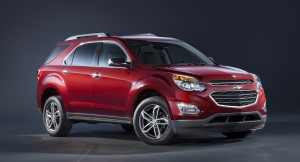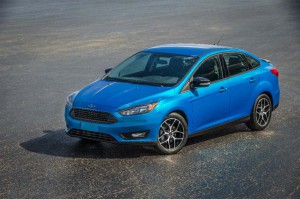
New crossovers and trucks are flying off dealer lots. While most people are springing for vehicles like the one above ...
The good news for automakers is that the average transaction price, i.e. what folks pay for a new vehicle accounting for rebates and other incentives, continues to rise. However, car buyers are seeing that they can afford less and less when it comes to a new vehicle.
A median-income household can afford 58.9% of the light-vehicle average transaction price, according to the November 2016 Auto Buyer’s Affordability Index, which translates to less than $20,000, and this is leaving some consumers less than optimistic.
In a recent survey, Requisite Press found that three out of four U.S. consumers – 74.6% – believe that new vehicles are unaffordable.
“Income growth has moderated, new-vehicle sales are plateauing, and affordability is clearly an issue,” said Phil Kelton, president of Requisite Press. “It’s difficult to predict when and how automakers will address this issue, but car buyers can individually take action today to improve the affordability of a new-vehicle purchase.”
The November index figure of 58.9 is based on a median household income of $57,929 a light-vehicle average transaction price of $31,473, and adherence to the 20-4-10 auto financing rule. This equates to an affordable monthly payment of $367 and price of $18,535.

... but this is really what they can afford, according to the latest Auto Buyer's Affordability Index.
(Auto market likely to maintain near-record pace next year. Click Here for the story.)
Putting that in real terms, here are some of the vehicles that can be bought for less than the index’s recommended price:
- 2016 Ford Focus: $17,225
- 2017 Hyundai Elantra: $17,150
- 2016 Ford Fiesta: $14,580
- 2016 Mazda3: $17,845
- 2016 Volkswagen Jetta: $17,680
- 2017 Fiat 500: $14,995
Mind you, those are all the manufacturers suggested retail prices and what type of equipment you’ll get with those cars is probably less than hoped for in most instances. Some other vehicles to consider include the 2016 models of the Honda Fit, Chevy Sonic, Hyundai Veloster, Kia Soul, Volkswagen Golf and the Jeep Renegade to name a few.
(Click Here for a closer look at November car sales.)
What do all of these have in common? None are the midsize or large utility vehicles or trucks that seem to be flying off dealer lots in the U.S. these days, largely because buyers are finding ways to make those vehicles fit in their budgets.
Utility vehicles – both classic SUVs and newer crossovers – pickups, vans and other light trucks now account for more than 60% of all new vehicle sales.
Kelley Blue Book estimated average transaction price for light vehicles in the United States was $34,948 in November 2016. New car prices have increased by 1.7% from November 2015, while dropping $51 0.1% from last month.
“Climbing transaction prices reflect the shift in consumer preference from cars to more expensive trucks and SUVs,” said Tim Fleming, analyst for Kelley Blue Book. “Manufacturers with strong truck and SUV lineups are currently seeing record pricing, especially in these late fall months when these segments are especially popular.
(To see more about Ford’s plans for its new Fiesta, Click Here.)
“However, the subcompact utility segment, which is the fastest-growing segment in the industry this year, is showing signs of slowing, with prices falling by 1%, thanks to higher discounts used to sell down excess inventory,” he said.

Sounds like a dangerously overinflated economic bubble to me. Especially considering the domestic car companies are outsourcing assembly of just about all affordable cars to low wage countries while ramping up production of overpriced trucks and SUVs in the U.S. The easily predictable result of this is going to be a collapse in demand and increased unemployment.